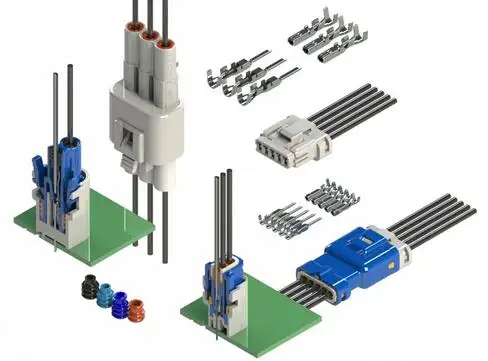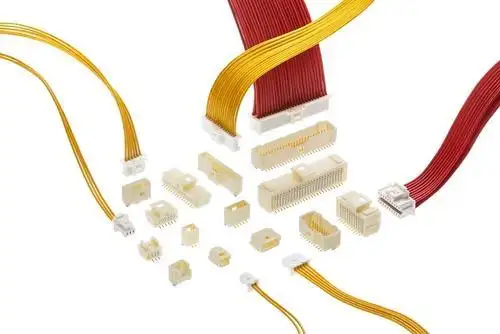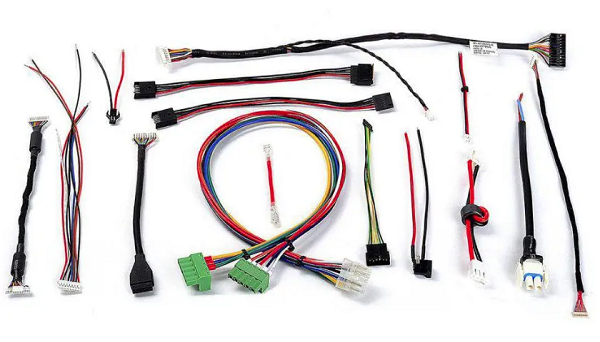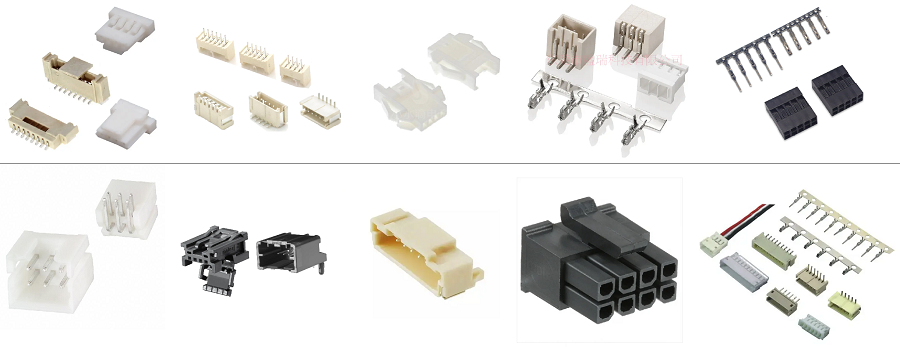Categorization:Brand Connector
Specializing in the production/sale of wire-to-wire/wire-to-board electronic connectors-We provide various series of wire-to-wire/wire-to-board connectors in the industry; the brands sold by the agent are: TE | MOLEX | JST | HRS | JAE | HONDA | JCT | Amphenol | Yazaki | APTIV | Yeonho, etc.; The main spacings of the products provided are: 1.0mm, 1.25mm, 1.5mm, 2.0mm, 2.5mm, 3.96mm, 4.2mm, 6.2mm, etc. We can customize and provide non-standard spacings according to customer requirements; At the same time, it can replace some WTW/WTB connector products of TE | MOLEX | JST | HRS | JAE and other brands.
1、 What is a wire-to-wire connector?: a wire-to-wire connector is a device used to connect two active devices; a wire-to-wire connector includes a wire-to-wire or wire-to-wire form, which is defined by the interconnection of two individual wires or corresponding conductors in two wires. Such equivalent connections are more commonly found in fixed connections, wire-to-wire connections, and IDC connections. Wire-to-wire connector origin: There are three basic types of connectors: wire-to-wire, wire-to-board, and board-to-board. These three types of connections are not entirely different. The following two reasons may account for such a type overlap condition. Firstly, the design scheme of the same connector is changed into a new design scheme applicable to another type of connection mode only by slightly changing the connection mode and then redefining the design scheme; Secondly, a cable can be assembled with a wire-to-wire connector at one end and a wire-to-board connector at the other end. For example, the form factor of an I/O connector Level 5 product is one of the most common examples. If we avoid the ambiguity of the category of this connection form, this connection form just provides a valid basis for the classification of connectors. A brief introduction to how wire-to-wire connections are made: Crimp connections are commonly used in discontinuous wire connectors. IDC is often used to dominate cable connectors because of its advantages in wire-related and harness end treatments. Wire-to-wire connectors have plastic supports in a variety of geometries, such as right-angle and circular polymeric shaped plastic parts. There are also many plastic parts and metal shielding shells with different shapes, which are mainly used in the military. Wire-to-wire connector features: Wire-to-wire connector supply information, you can also display the sales of wire-to-wire here free of charge, and after T6 heat treatment, the appearance of stainless steel shot sand blasting treatment, with good air tightness, beautiful appearance and other characteristics, simple operation and installation, convenient to achieve the effect of never stink, save the old ground, underground trap cumbersome installation and maintenance and connection. The wire-to-wire connector family includes rectangular, circular, and wire-to-wire connectors for the future subminiature-D and ribbon connectors. Coaxial connectors also belong to this family, but their design features for high frequency use will be discussed separately later. Wire-to-wire connector applications: Its products are used in automotive, communications, consumer electronics, data processing, industrial machinery and other fields. AMP connectors are the technology leader for auxiliary circuits, and the AMP Economy Power (EP) wire-to-board connection system is designed for auxiliary circuit applications.

---------------------------------------------------------------------------------------------------
2、 What is a wire-to-board connector? A wire-to-board connector is a connector that connects wires to a circuit board. The main function of a connector is to transmit power and signals, so the wire-to-board connector can be said to be the ancestor of all interconnectors. According to the different uses and requirements, there are numerous types of wire-to-board, but in the information industry, most of them are distinguished by the distance between pins and the current and voltage transmitted. The wire-to-board connector supports four basic data transfer modes: pilot transfer, isochronous transfer, abort transfer, and block transfer. Each transmission mode has different properties when applied to terminals with the same name. Wire-to-board connectors are fully waterproof and dustproof and are available in wire-to-wire and wire-to-board versions. They extend the popular sealed IP67-rated wire-to-board connectors to include D-Sub, USB, HDMI, wire-to-board, and wire-to-wire wire-to-board connectors, and support low-level signaling and power requirements up to 300 V. The dramatic increase in automotive infotainment and safety options is a catalyst for demand suppliers to supply vehicle manufacturers with smaller interconnected products. Design engineers must pack more electronic installations into the opposite space. By using smaller pin and terminal sizes, unsealed wire-to-board fragmentation allows equipment manufacturers to pack circuits into tighter spaces while lowering costs and insisting on functionality, safety, and robustness.

---------------------------------------------------------------------------------------------------
What are the 3、 wire-to-board connector spacings? With the increasing precision of electronic equipment, the development of connectors also shows obvious characteristics of narrow spacing and integration. The control functions and complexity of various electronic systems are increasing, and the corresponding connector products need to achieve narrower spacing and higher integration while balancing stability. For example, the general board-to-board connectors of industrial control equipment have gradually transited from 2.54 mm, 2.0 mm and 1.27 mm to 0.8 mm, 0.635 mm and 0.3 mm, while the wire-to-board I/O connectors have also shown a clear trend of narrow spacing. The latest mini I/O connectors are smaller and more stable than standard I/O connectors. Common spacings of wire-to-board connectors are 1.0mm, 1.25 mm, 1.5mm, 2.0mm, 2.5mm, 3.96mm, 4.2mm, 6.2mm, etc. The non-standard spacing can be customized according to customer requirements.
---------------------------------------------------------------------------------------------------
4、 some pictures of wire-to-wire/wire-to-board connectors produced/sold by our company (pictures are for reference only):

---------------------------------------------------------------------------------------------------
How do 5、 purchase or know about wire-to-wire/wire-to-board connector products? :
World Trade Electronic Products Network-production/sales [wire-to-wire/wire-to-board connector products]; If you want to buy or know what we can provide wire-to-wire/wire-to-board connector product solutions, please contact us through the following way.